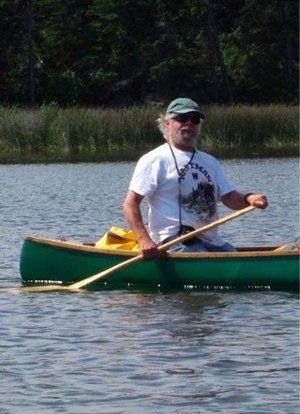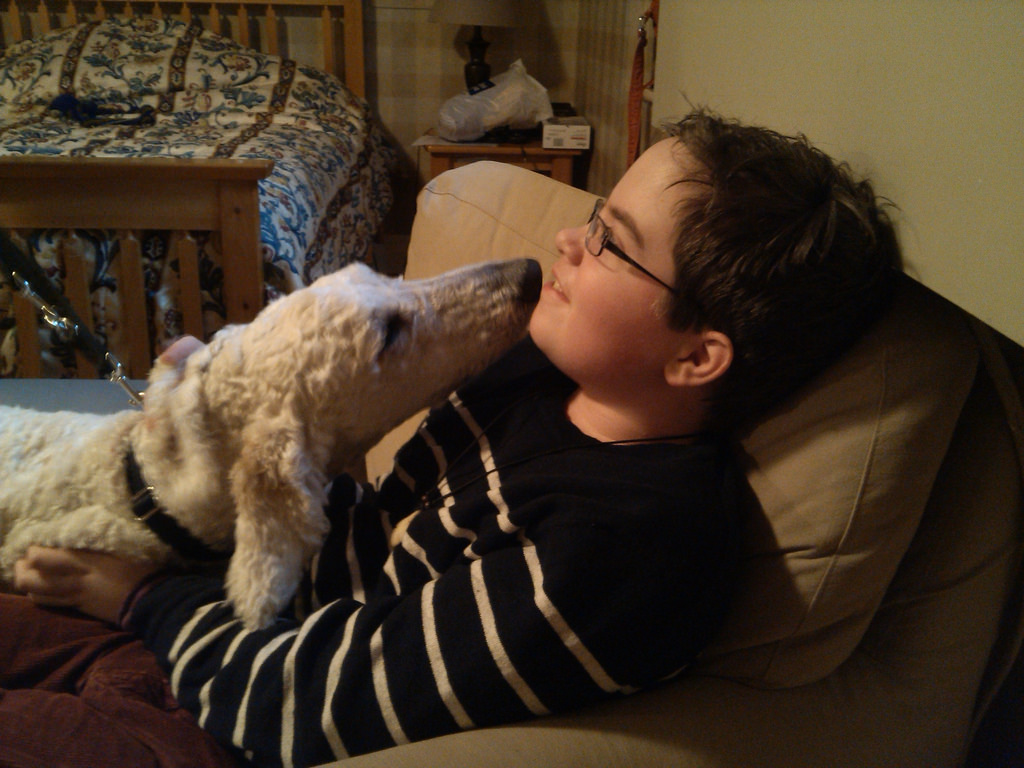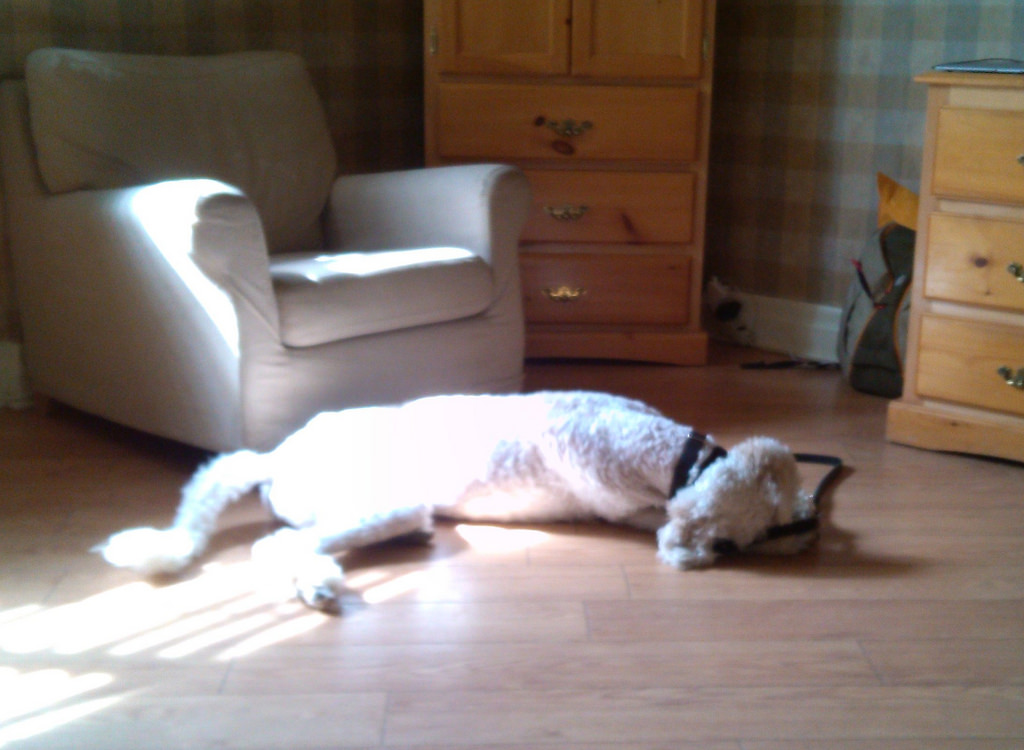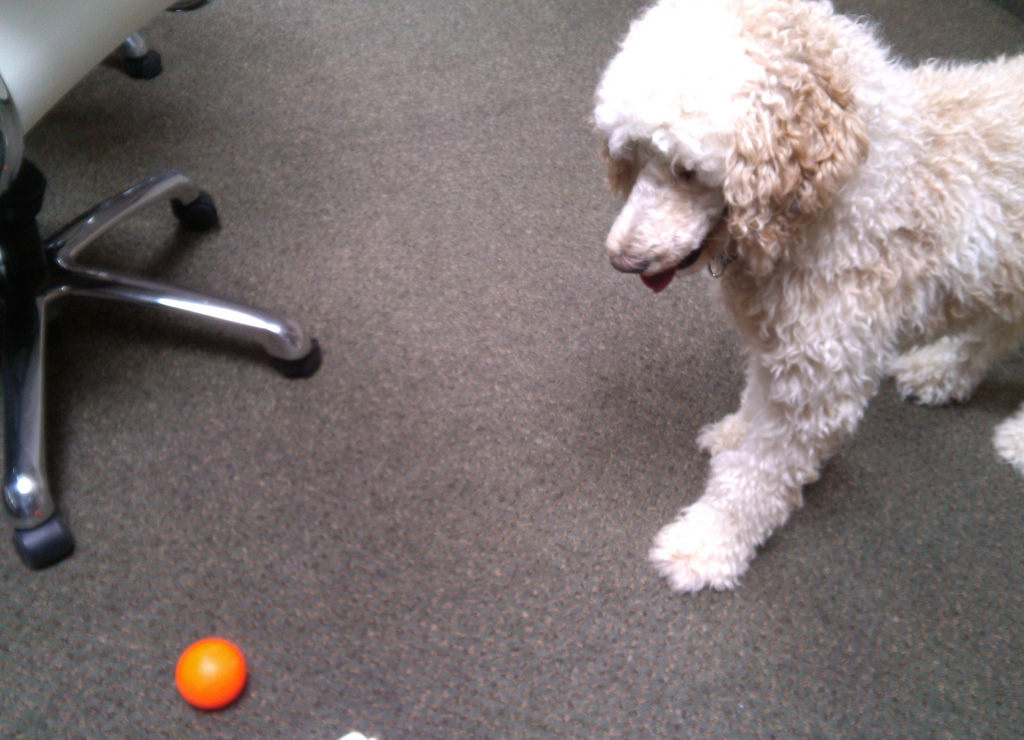There’s a book that Oliver and I are quite fond of called The Survival Guide for Kids with Autism Spectrum Disorders (And Their Parents). We found it in the book shop at the Ontario Science Centre in 2012 and have found it a useful, funny, insightful book.
My favourite part of the book is the section called “What is Friendship?” that starts out like this:
That may seem like an easy question … but it’s more complicated than you think. Kids who have autism spectrum disorders don’t always understand the difference between a friend and an acquaintance.
So, what is the difference, anyway?
An acquaintance is someone you see on a regular basis but may not know well. You might know the person’s name and recognize his or her face. You might say hi to the person or make “small talk” by saying stuff like “How are you?” or “What’s new?” Acquaintances may include: classmates, kids in higher and lower grades at school, neighbors, and teammates (if you’re on a team). Kids who go to your place of worship, community center, or park are also acquaintances. So are adults you recognize — your parents’ friends or people they work with, a librarian or coach, and neighbors.
An acquaintance is someone you might see almost every day or a few times a week. That person might be nice to you. That person might speak with you briefly. He or she may even hang out with you for short periods of time. But it’s usually not friendship. Friendship is bigger — and better.
The most important piece is togetherness. A friend wants to spend time with you. He or she will call you on the phone and invite you over. You’ll spend time together in places other than school.
I like this description because it is, in essence, a simple reverse engineering of friendship: here’s what it is, here’s what it isn’t.
For someone like me to whom social skills don’t come naturally, this sort of plain explanation is a big help; I only wish I could find a resource that would go even deeper, in similarly simple terms. Sort of like how I was able to get a helpful answer to the question “I don’t understand mingling, can you explain it to me?” last fall at Alibis for Interaction.
I’m turning 48 years old next week. In those years, if I hew closely to the definition in this book, I’ve had perhaps less than a half dozen people I would count as friends – “a really kindred spirit to whom I can confide my inmost soul,” as Anne would say. Friendship is hard, both naturally, and especially if it appears like a mysterious dark art that’s only occasionally available to people who mostly aren’t you. And extra-especially hard if you’re almost 50 years old and living in a place where most everyone became friends in kindergarten.
But the hopeful thing — and the reason that passage in the book was so helpful to me — is the realization that, despite the dark mystery, there are, in fact, some rules. Or at least some guidelines. Chief among which, perhaps, is that if that friends don’t fall from trees, and that you have to make an effort to cultivate them – like they say, “He or she will call you on the phone and invite you over,” which means, presumably, that you should be calling he or she up from time to time to invite them over.
I’m often struck with how incredibly lucky it was that Catherine and Oliver and I ended up together, neuro-atypical as we all are, by times. If Oliver can lead me to realizations like this, and I can return the favour by helping him decrypt socials things that I managed to figure out on my own, perhaps there is hope for us yet!
Twenty-one years ago, Morley Pinsent was the first person on Prince Edward Island I ever talked to on the telephone (also, via ye olde campinse@atlas.cs.upei.ca on the old UPEI CA*Net service, he was the first person on PEI I ever exchanged email with).

Morley was contracted by the PEI Crafts Council to manage the ACOA-funded project that originally brought me to the Island and it’s not an exaggeration to say that if not for the good humour and good welcome he gave me and, later, in the tutoring to understand “the Island Way of Life” that Morley gave me, I might not still be here.
There’s not a better man to be found on PEI.
Morley’s currently undergoing treatment for cancer and there’s a benefit to help him out being held on April 6, 2014 at 2:00 p.m. at the Cymbria Lions Club in South Rustico. I’m going, and encourage you to go to.
Morley’s worked as a consultant for as long as long, and consultants don’t get health plans; as such, Morley could use a hand from those who are in a position to help out a little.
If you want to donate something for the silent auction, or otherwise help out, call Anne Marie Buote (963-2615) or Cecelia Doiron (963-2703).
Because of Robertson Library’s significant investment in Islandora as a content repository tool, dissing Islandora as being an annoying piece of cruft between me and the data I want to harvest isn’t singing from the company song book. And of course Islandora is much more than an annoying piece of cruft: it truly is a very useful, flexible tool that enables projects like IslandNewpapers.ca and innumerable other repository projects to be managed from a web front-end.
But sometimes you want your fingers on the beating heart of the data, not abstracted through an intermediary, and fortunately Islandora doesn’t prevent that, as it’s possible to communicate directly with Apache Solr and Fedora, bypassing the Islandora layer.
For example, I had a request from a friend who was using IslandNewspapers.ca to do some research on the Mayne family: there are 1847 pages of The Guardian in IslandNewspapers.ca with one or more instances of the word “Mayne” on them, and she wanted to avoid manually visiting 1847 pages in IslandNewspapers.ca to pull out that information.
Here’s what I did to help her along.
I reverse-engineered the Solr query that a search for “Mayne” in IslandNewspapers.ca was running and found it looks like this (actually, the “rows” parameter is set to 20 by default, so I changed it to 2000 to ensure I could pull out all of the instances of Mayne in a single query).
To pull out that Solr search results, I just grabbed the output of that search using wget, like this:
wget "http://islandnewspapers.ca:8080/solr/select?defType=dismax&facet=true&facet.mincount=0&facet.limit=20&facet.field=PARENT_century_s&facet.field=PARENT_decade_s&facet.field=PARENT_year_s&facet.field=PARENT_month_s&qt=standard&facet.date=PARENT_dateIssued_dt&f.PARENT_dateIssued_dt.facet.date.start=NOW%2FYEAR-120YEARS&f.PARENT_dateIssued_dt.facet.date.end=NOW&f.PARENT_dateIssued_dt.facet.date.gap=%2B1YEAR&f.PARENT_dateIssued_dt.facet.mincount=0&facet.date.start=NOW%2FYEAR-20YEARS&facet.date.end=NOW&facet.date.gap=%2B1YEAR&hl=true&hl.fl=OCR_t&hl.fragsize=400&hl.simple.pre=%3Cspan+class%3D%22islandora-solr-highlight%22%3E&hl.simple.post=%3C%2Fspan%3E&qf=OCR_t^10.0&version=1.2&wt=json&json.nl=map&q=Mayne&start=0&rows=2000&indent=on&debugQuery=true" -O Mayne.json
(Update: it turns out that I was able to access Solr directly because I was connected to the UPEI VPN; Solr isn’t exposed to the Internet-at-large right not, so y’all on the outside world cannot, alas, run that query as I could).
The result was a 53 MB JSON file that, key for my purposes, contains a “highlighting” object that lists each of the 1847 instances of “Mayne”, with the Fedora “PID” – the unique identifier of that specific page in The Guardian – and the keyword in context snippet, like this:
"highlighting":{ "guardian:19450730-010":{ "OCR_t":["; Mrs. Hutghlngs, Cyril George. F0. Keith Warren. Bigger. Sask. High Jump — Wendell Mayne, Knight, Ronald Earl. F'l.-Lieut., Herman Mayne. Saul! sic. Marie. Ont Spike driving contest, ladies- Ajqyrigk, Peter William. 110.. lis’ team won over Mr. Everett London, Ont. 6015151115‘,- ldi Mi l 4 =,;- B ll, 90.. St. Mary's. ug-o -war. a es- ss E sic 01?.\" n‘ R055 e Maynes teafn won over Mrs. Wen- PTAM, New"]}, "guardian:19261030-011":{ "OCR_t":["- ed to the pupils are as follows: canes t-cnAlns Best sheaf of 100 heads 0t‘ oats. —1- Melburne MscDoweil, Pleas- ant Vulley 2 Cimeuce Haslaxn, Springfield 3 Rich Kelly, Stanchol 4 E3191 H088\". Solltil Granville. ‘Wheat—1 Ethel Hogan, 2 Lloyd Stanchei 4; Clgrence Springfield. Corn-—1 Allison Mayne, Spring- field 2 ‘Priscilla Frizzeil, Stsnchel 3 Lloyd Frlzzei. Tbreslled ‘Beans-l Alice Weeks"]},
I cut-and-pasted those 1847 objects into a text file all their own, then did some BBEdit-massaging to end up with a tab-delimeted ASCII file that looked like this:
guardian:19450730-010 ; Mrs. Hutghlngs, Cyril George. F0. Keith Warren. Bigger. Sask. High Jump — Wendell Mayne Knight Ronald Earl. F'l.-Lieut. Herman Mayne. Saul! sic. Marie. Ont Spike driving contest ladies- Ajqyrigk Peter William. 110.. lis’ team won over Mr. Everett London Ont. 6015151115‘ - ldi Mi l 4 = ;- B ll 90.. St. Mary's. ug-o -war. a es- ss E sic 01?.\" n‘ R055 e Maynes teafn won over Mrs. Wen- PTAM New" guardian:19261030-011 - ed to the pupils are as follows: canes t-cnAlns Best sheaf of 100 heads 0t‘ oats. —1- Melburne MscDoweil, Pleas- ant Vulley 2 Cimeuce Haslaxn, Springfield 3 Rich Kelly, Stanchol 4 E3191 H088\. Solltil Granville. ‘Wheat—1 Ethel Hogan 2 Lloyd Stanchei 4; Clgrence Springfield. Corn-—1 Allison Mayne Spring- field 2 ‘Priscilla Frizzeil Stsnchel 3 Lloyd Frlzzei. Tbreslled ‘Beans-l Alice Weeks
Finally, I wrote a little PHP script to cycle through that file, and to harvest the JPEG2000 and OCR data streams out of Islandora and into files in a local directory.
Running the script left me with an index.html file with links to the keyword-highlighted version of the newspaper image in IslandNewspapers.ca, to the remote JPEG2000 image of each page, to a locally-stored ASCII file of the OCR‘d text, and the keyword-in-context snippet returned by Solr:

With this file and its links, my Mayne friend is now ready to dig into the data in a much more efficient manner.
We were out at the airport on Friday picking up Ethan and Catherine when I spotted our next door neighbours, Bob and Dorothy.
“Oh, hi there… what brings you folks out here today?”, I greeted them.
“We’re picking up our grandson,” Bob replied.
“Oh, he’s old enough to travel by himself?”, I asked.
“Well, he’s a Crown Prosecutor, so… yes”, replied Dorothy.
Did I mention that I’m not a good judge of people’s ages?
Toronto’s Pearson Airport is surprisingly easy to get to via public transit:
- Get on the Bloor-Danforth subway and ride west to the very end of the line, the Kipling station. This run takes about 25 minutes from the Bloor/Yonge station.
- At the Kipling station get on the 192 Airport Rocket bus. No need to pay another fare.
- About 20 minutes later, get off at Terminal 1 or Terminal 3.
- There is no step four.
The whole trip, from anywhere on the TTC’s network, costs only $3 a person ($2 for kids). Compare that to about $20 a person for the private airport bus, which is only 20 minutes faster, and your thrifty side will thank you. Beware that if you are traveling at rush hour you may find that the cramped TTC subway passages, filled with obstructions and inconvenient doorways, make this a more challenging trip than you would like, especially if you’re traveling with children; in this case the extra $17 might just be worth it.
Update: thanks to a Facebook comment from Nancy White, I’ve since realized that you don’t even need a transfer at Kipling, as the bus terminal is inside the “fare paid” zone, so you just exit the subway, go up the escalator, and get on the bus.
As it happened, Oliver and I were still in Ontario when it was time for Ethan’s graduation from his 10 days of training, and so we hopped on th GO Train to Oakville last night to participate.
While some of the other programs at Lions Foundation Dog Guides involve a much longer training time, a lot of Ethan’s training will happen back home in Charlottetown, as that’s when his bonding with Oliver starts, so while other programs have a more “graduation”-like graduation, the Autism Assistance Dog program’s is more of a “meet and greet”: an opportunity for the dogs’ foster families (who raised them for their first year, as volunteers) to reconnect with their once-puppies and to meet the families who will take over from here.
We went along a little early so that Oliver could meet Ethan outside of the public event (as families in the program come from across Canada, it’s unusual for clients like Oliver to actually see the school and attend the event, but it’s welcomed when the opportunity presents). We walked up to Catherine’s room with Alissa, one of Ethan’s trainers, and knocked on the door. Catherine made sure Ethan was secured, and then the smelling and hi-howya-doing began; after a few minutes of this, Ethan and Oliver were comfortable enough to get close:

They seem to like each other, which is a good sign.
The rest of the night was, as you might expect, an emotional time. Ethan’s foster family are from Etobicoke, and Ethan was their 10th and (they say) final foster; they still care for his grandfather, though, so they’re still involved in the program. They obviously have great affection for Ethan, and it was clear that Ethan had a stressful night of divided loyalties that will take a while to work out of his system.
For my parents and brother and sister-in-law who came along too it was a rare one-time-only chance to interact with Ethan up close and personal (i.e. they were allowed to pet him); I think the feeling is that (a) it’s impossible to restrain family members and (b) it’s a sort of all-bets-are-off free-form of an evening anyway, so, okay, just this once.
By 8:30 p.m. it was time to head back to Toronto. We said our goodbyes to family and to Ethan and headed out into the rainy night.
We’re back to PEI today; Ethan and Catherine fly tomorrow morning (Ethan, as a dog guide, gets to fly inside the cabin at Catherine’s feet) and then the real process of settling Ethan into the life of our family begins.
As Ethan won’t join Oliver at school for six months to a year, he’ll be in training with Catherine and I during the day. So I’ll be the guy at Casa Mia with an adorable red-vested poodle that you can’t pet sitting at his feet.
My mother mentioned yesterday that June Cleave had died.
June — Mrs. Cleave to me — was a grade one teacher at Balaclava Elementary School which I attended for grades 2 and 3. She was never my teacher, but she taught all of my little brothers.
Which is not to say that she didn’t touch my life: I was in Ms. Abrams class in grade 2 and, one day, our art activity was to make “toothbrush paintings”: take an old toothbrush, dip it in paint, and spritz the paint onto paper making an interesting-looking patterns.
Except that, for me, the notion of mixing toothbrushes, clearly intended for brushing your teeth and painting, clearly nothing to do with brushing your teeth was anathema.
I refused.
And refused.
Feet may have been stamped.
And thus I was placed at a desk in the hall as punishment (that’s how schools rolled in the 1970s).
Mrs. Cleave, bless her heart, happened to walk by while I was in toothbrush prison, and she took a moment to ask what was happening, and spoke to me like a real person and acknowledged that yes, perhaps the notion of toothbrush painting might actually be distressing. She wasn’t a rebel, she didn’t try and bust me out nor break ranks with her fellow teacher, but she showed compassion when compassion was needed.
It was one of those seemingly-insignificant little moments that stick with you, and it’s an episode that I return to often in my idle moments: every interaction matters, and when you can extend a hand, you should.
Meet, Ethan, Oliver’s dog guide:

He came into our life pretty much as we were told: we waited in our room in nervous anticipation, there was a knock, we opened the door, and there he was, a lanky, cuddly (yes, I am the kind of guy who uses the word “cuddly” now), super-smart Standard Poodle. Cream, technically, but given his close-cropped cut, a pinky-white when you see him.
Yesterday was taken up exclusively with getting-to-know-each-other activities. We learned how to give commands – including, given his eventual duties with Oliver, the need to “stay” at every door opening and at the top of every staircase and wait until “forward” – and how much and how often to feed him and give him water, and how he should behave when he’s “on duty” (wearing his vest) and “off duty” (at home). And we got to experience the joys of hanging out in the central peeing facility (yes, there is a central peeing facility).
We even got to experience our first bout of “actually, no, you can’t pet him” when my brother Mike, bless him for being the first, dropped Catherine off after her brief sojourn into Burlington to see Oliver and my family.
That, “no, you can’t pet him” (or play with him, or let him sniff your hand, or pat him on the head, or give him commands, or give him treats, or, well, anything) will, I think, be the hardest part of life with Ethan. He is, fundamentally, a working dog: his job is to be an important part of Oliver’s life, a sort of emotional prosthetic device. Catherine and I are his handlers, Oliver is his client, so to speak, and the rest of you, well, you don’t factor into the equation.
On one level this is really a shame, as he really is — you’ll have to take my word for it — a super-affectionate “let me nuzzle my snout into your armpit” dog. And he’s allowed to nuzzle his snout into my armpit because when he’s off duty an inside our house, he’s still, after all, a dog. But this arrangement is the only way that he can be effective with Oliver: if he’s forming bonds with y’all, this isn’t going to work as it’s supposed to. So, in advance, sorry.
Today is my last day here in Oakville – I’m back to Burlington tonight to pick up Oliver and head into the city tomorrow for our quick vacation. I didn’t anticipate that I would regret this decision. Not the decision to rejoin Oliver, but the one to leave Ethan. Who ever thought I would actually like him. Miss him, even.
Wonders, it seems, will never cease.
Today was our second day at dog camp (huh?).
I slept a fitful night last night, partly from pre-dog-anxiety, partly because our misunderstanding of the in-room heating unit caused our room temperature to fluctuate between 10ºC and 35ºC. Needless to say, when an opportunity came to cut my losses at 6:00 a.m. I jumped at it, bustled myself out of the room and headed across the long, dark, cold bridge to downtown Oakville to fetch coffee from Starbucks, the only place open at that early hour.
I was back at dog HQ in plenty of time for breakfast, and the formal training sessions started up, on the dot, at 9:00 a.m.
Today we covered a lot of ground – starting with how dogs think, how our dog will fit into our family and our everyday life, and, in the afternoon, running through the commands that our dog guides have been trained to respond to (stay, forward, down, off, hugs, etc.), and running some practical exercises, first with each other and later with real dogs (stand-in veterans, not ours).
Along the way I fell hard for an espresso-coloured retired service dog, a poodle named Greta, who kept me entertained for a good chunk of the afternoon bringing me an orange ball to throw for her. Any misgivings I had about the poodle kingdom were set aside, as Greta proved to be everything a lab or golden retriever is, but with moxie and a Yoda-like intelligence. It was a good corner-turn at the right moment, given that we’ll become poodle-handlers starting tomorrow.
The “what is our dog’s colour and name” mystery has turned into a fun game between our trainers, who both know, and we handlers-to-be, who don’t. I’m sure there are pedagogical reasons for this — although what they are eludes me. Perhaps it’s simply to keep us focused? In any case, it’s something we don’t learn until tomorrow.
But cracks in the armour have appeared: today one of our number wondered out loud whether at least the genders and first letters of the names might be revealed, and this proposition was accepted, which is how we came to know that the dog that we will meet tomorrow with be a male Standard Poodle with a name starting with the letter ‘E’. Immediate tinder for the imagination: my brother Steve alone came up with (via Twitter) Ephram, Esteban, Excelsior, Evan, Edgar, and Etienne all within a couple of minutes (I later learned that none of these is it).
So we have another night to let visions of a Dog Named Eggroll™ dance in our heads. And then, the story goes, sometime tomorrow we will all be ushered back to our rooms to wait for Ehud, Esmé or Ernie, along with his trainer, to come calling. Introductions will be made, and then we’ll be left to get to know each other for a while before reconvening for some serious heel, stay, down, off, hugs action.
From that point on, our dogs are under our care, 24/7. They sleep in our room. We feed them. We groom them. They come with us to breakfast. Just like real life. Which is the point.
After I cut outta here on Saturday afternoon, Catherine’s got five more days of acclimation left: there will be visits to the mall and to Tim Hortons, discussions of escalators and elevators and international travel, and much opportunity for bonding.
In the meantime, watch this space for the letter E to turn into a fully-fledged name.
Oh, and here’s a picture of Greta, not our dog, but a grand dog nonetheless:

 I am
I am